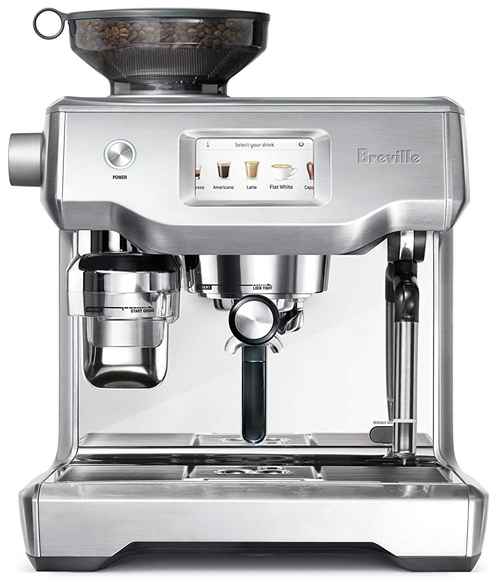Latte Cappuccino Recipe [+Tips]
Note: This page contains affiliate links.
As an Amazon Associate, I earn from qualifying purchases when you click on the link, but you are not charged extra.
Oh, the joy of a perfectly crafted latte cappuccino! Whether you’re a coffee aficionado or a casual sipper, this delightful drink strikes a magical balance between the robust, bold essence of espresso and the creamy, frothy goodness of steamed milk. But what exactly is a latte cappuccino? It’s basically a happy middle ground between a latte (more milk) and a cappuccino (more foam), offering you a luxurious, silky texture that dances on your taste buds.
- Old World Christmas Beans: Tastes like the holidays in every cup — discover the cozy magic of Old World Christmas Beans before the season slips away.
- Kirkland Sumatra French Roast : Dark, bold, and wildly smooth—why Kirkland’s Sumatra French Roast is the best-kept secret of serious coffee drinkers.
- Hot Fudge Whole Bean Coffee : What happens when dessert meets coffee? Meet the decadent whole bean that tastes like hot fudge—but better.
- Aroma Ridge Guatemala Antigua Medium Roast : From the highlands of Guatemala to your morning mug—this rich, balanced roast is waking up coffee lovers everywhere.
- Juan Valdez Cumbre Colombian Coffee : Crafted by Colombia’s most iconic coffee legend—why Cumbre is a must-try for fans of bold, authentic flavor.
- Think of it as the best of both worlds: rich espresso flavor softened by steamed milk, topped with that fluffy cloud of foam.
- It’s the kind of drink that warms you up, perks you up, and sometimes even inspires your day.
- Whether you’re sipping at a cozy café or making it at home in your kitchen, this recipe will guide you to latte cappuccino greatness.
And here’s the best part – it’s not as intimidating as it sounds. With a little guidance, you’ll be a latte cappuccino artist in no time. So, grab your favorite mug, and let’s get started!
Contents
- 1 Ingredients For Latte Cappuccino Recipe
- 2 How To Make Latte Cappuccino?
- 3 Expert Tips
- 4 Recipe Variations
- 5 Final Words
- 6 FAQs
- 6.1 What Is The Difference Between A Latte And A Cappuccino?
- 6.2 What Ingredients Are Needed To Make A Latte Or Cappuccino?
- 6.3 Can I Use Regular Coffee Instead Of Espresso In A Latte Or Cappuccino?
- 6.4 What Is The Ideal Milk For Frothing In A Latte Or Cappuccino?
- 6.5 How Much Milk Should I Use For A Latte Versus A Cappuccino?
- 6.6 Do I Need A Special Machine To Make A Latte Or Cappuccino At Home?
- 6.7 What Is The Typical Ratio Of Espresso To Milk In These Drinks?
- 6.8 Can I Make An Iced Version Of A Latte Or Cappuccino?
- 6.9 How Long Should I Steam Or Froth The Milk?
- 6.10 What Type Of Coffee Beans Are Best For Making Lattes And Cappuccinos?
Ingredients For Latte Cappuccino Recipe
Getting the ingredients right is the first step to making a latte cappuccino that feels like a little cup of heaven. Here’s what you’ll need:
-
Espresso
- 1 to 2 shots (about 30-60 ml) of freshly brewed espresso – the star of the show. The quality here matters, so freshly ground beans are your best bet.
-
Milk
- Around 150-200 ml of whole milk is ideal. Why whole milk? Because it froths beautifully and gives that creamy texture we adore. But hey, if you prefer alternatives, we’ll chat about that in the variations section.
-
Milk Foam
- About 1-2 cm of velvety milk foam on top – this is what makes the cappuccino vibe shine.
-
Optional Sweeteners
- Sugar, honey, flavored syrups (vanilla, caramel, hazelnut), or even a sprinkle of cinnamon or cocoa powder for that extra flair.
-
Equipment Essentials
- Espresso machine or a strong coffee maker like an Aeropress or Moka pot.
- Milk frother or steam wand.
- A good-sized cup or mug – ideally 6 to 8 ounces.
Simple, right? Just a few components, but they come together to create that magic cup!
How To Make Latte Cappuccino?
Alright, let’s break down the process step-by-step. I promise, it’s easier than it sounds, and with a bit of practice, it becomes a delightful ritual.
-
Brew The Espresso
- Use freshly ground coffee beans for the richest flavor.
- Brew 1 to 2 shots of espresso using your espresso machine, Moka pot, or Aeropress.
- Pour the espresso into your favorite cup – watch that beautiful crema (the golden foam on top) appear!
-
Steam And Froth The Milk
- Pour cold whole milk into a frothing pitcher (about twice the volume you want in your cup, because it will expand).
- Using the steam wand or frother, steam the milk until it’s hot (around 150°F or 65°C) and has a creamy, velvety texture with a layer of microfoam on top.
- If you’re frothing by hand, heat the milk gently and whisk vigorously to create that foam.
-
Combine Espresso And Milk
- Slowly pour the steamed milk into the espresso, holding back the foam with a spoon.
- Then, gently spoon the milk foam on top to create that iconic cappuccino cap.
-
Add Toppings (optional)
- Sprinkle a pinch of cocoa powder, cinnamon, or nutmeg for a festive touch.
- Add syrups or sweeteners if you like it sweet.
-
Serve And Enjoy
- Grab your favorite spot, sip slowly, and savor the harmonious blend of robust espresso and creamy milk.
Expert Tips
Because you deserve to make this drink like a pro barista, here are some insider nuggets to elevate your latte cappuccino game:
- Use fresh beans and grind just before brewing: Pre-ground coffee loses flavor quickly. Fresh grind = better crema and aroma.
- Milk temperature is crucial: Overheated milk (above 160°F/70°C) can taste burnt and lose sweetness. Aim for warm, not scorching.
- Perfect the foam: Microfoam is what separates a good latte cappuccino from a meh one. It should be smooth and silky, not bubbly or dry.
- Practice your pouring: Pouring milk slowly and steadily helps the foam sit beautifully on top and can even let you try some latte art!
- Don’t rush: Making coffee is an experience. Take your time to smell, feel, and appreciate each step.
- Clean your equipment: Residual coffee oils can affect taste, so a clean espresso machine and frother are essential.
Recipe Variations
Want to mix things up? Here are some fun ways to customize your latte cappuccino:
- Milk alternatives: Almond, oat, soy, or coconut milk – each froths differently but can add unique flavors and textures.
- Flavored lattes: Add vanilla, caramel, hazelnut syrup, or even a pinch of cardamom or pumpkin spice for seasonal flair.
- Iced latte cappuccino: Brew your espresso over ice, then add cold frothed milk for a refreshing twist.
- Extra foam: If you prefer a more traditional cappuccino, increase the foam to milk ratio for a frothier experience.
- Decaf option: Use decaffeinated espresso for a late-night treat that won’t keep you up.
- Add chocolate: Sprinkle cocoa powder or drizzle chocolate syrup to make a mocha-cappuccino hybrid.
The sky’s the limit – customize your drink to fit your mood, time of day, or creativity!
Final Words
Making a latte cappuccino at home is not just about the drink itself; it’s about creating a little moment of joy and craftsmanship in your day. With just a few ingredients and some practice, you’ll have a barista-worthy beverage that rivals your favorite café’s offering.
And remember – the best coffee is the one made with love, patience, and a bit of playfulness. Don’t be afraid to experiment with milk textures, flavors, and presentation. Every cup tells a story, and yours is just waiting to be brewed.
FAQs
What Is The Difference Between A Latte And A Cappuccino?
A latte contains more steamed milk and a light layer of milk foam, resulting in a creamier, less intense coffee. A cappuccino has equal parts espresso, steamed milk, and milk foam, giving it a stronger espresso flavor and a frothier texture.
What Ingredients Are Needed To Make A Latte Or Cappuccino?
The basic ingredients for both drinks are espresso, steamed milk, and milk foam. Optional additions include flavored syrups (like vanilla or caramel), cocoa powder, or cinnamon for garnish.
Can I Use Regular Coffee Instead Of Espresso In A Latte Or Cappuccino?
While espresso is preferred for authenticity and flavor, you can use strong brewed coffee or a concentrated coffee shot from an AeroPress or Moka pot as a substitute.
What Is The Ideal Milk For Frothing In A Latte Or Cappuccino?
Whole milk produces the best froth due to its fat and protein content. However, 2% milk, skim milk, and alternatives like oat milk and almond milk can also be frothed with varying results.
How Much Milk Should I Use For A Latte Versus A Cappuccino?
For a latte, use about 6-8 ounces of steamed milk with a thin layer of foam. For a cappuccino, use around 4 ounces of steamed milk with a thicker foam layer, typically equal to the espresso shot in volume.
Do I Need A Special Machine To Make A Latte Or Cappuccino At Home?
An espresso machine with a steam wand is ideal, but you can also use a French press, manual frother, or microwave and whisk method to froth milk. Espresso shots can be made with an espresso machine, AeroPress, or stovetop Moka pot.
What Is The Typical Ratio Of Espresso To Milk In These Drinks?
A latte typically uses a 1:3 or 1:4 ratio of espresso to milk, while a cappuccino uses a 1:1:1 ratio of espresso, steamed milk, and milk foam.
Can I Make An Iced Version Of A Latte Or Cappuccino?
Yes. For an iced latte, combine espresso with cold milk and pour over ice. Iced cappuccinos are less common but can be made with cold foam over chilled espresso and milk.
How Long Should I Steam Or Froth The Milk?
Steam milk until it reaches 150-155°F (65-68°C), which is hot but not boiling. The milk should be silky for a latte and more airy with microfoam for a cappuccino. This typically takes 20-30 seconds.
What Type Of Coffee Beans Are Best For Making Lattes And Cappuccinos?
Medium to dark roast beans are commonly used for espresso-based drinks like lattes and cappuccinos because they provide a bold flavor that balances well with milk.

